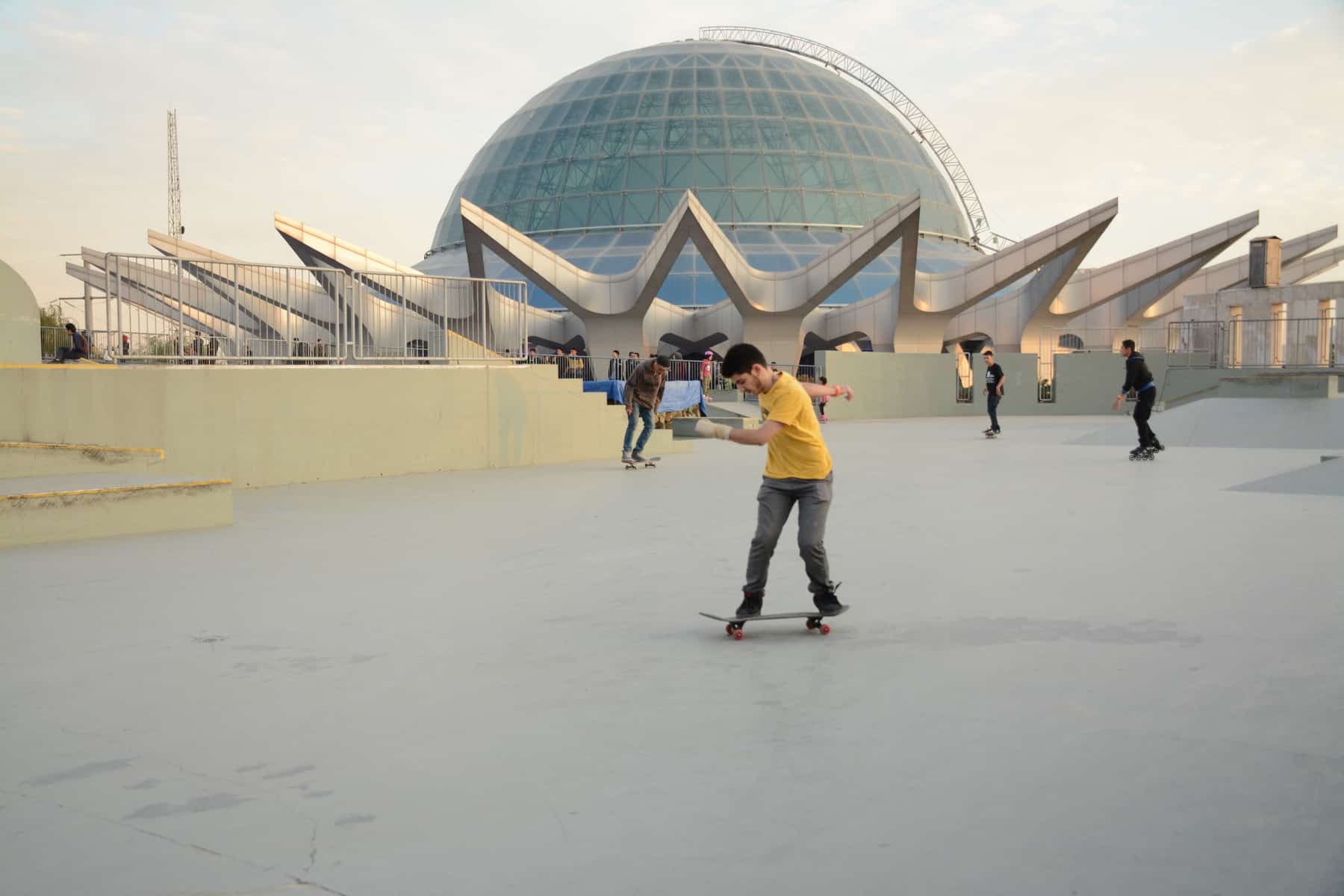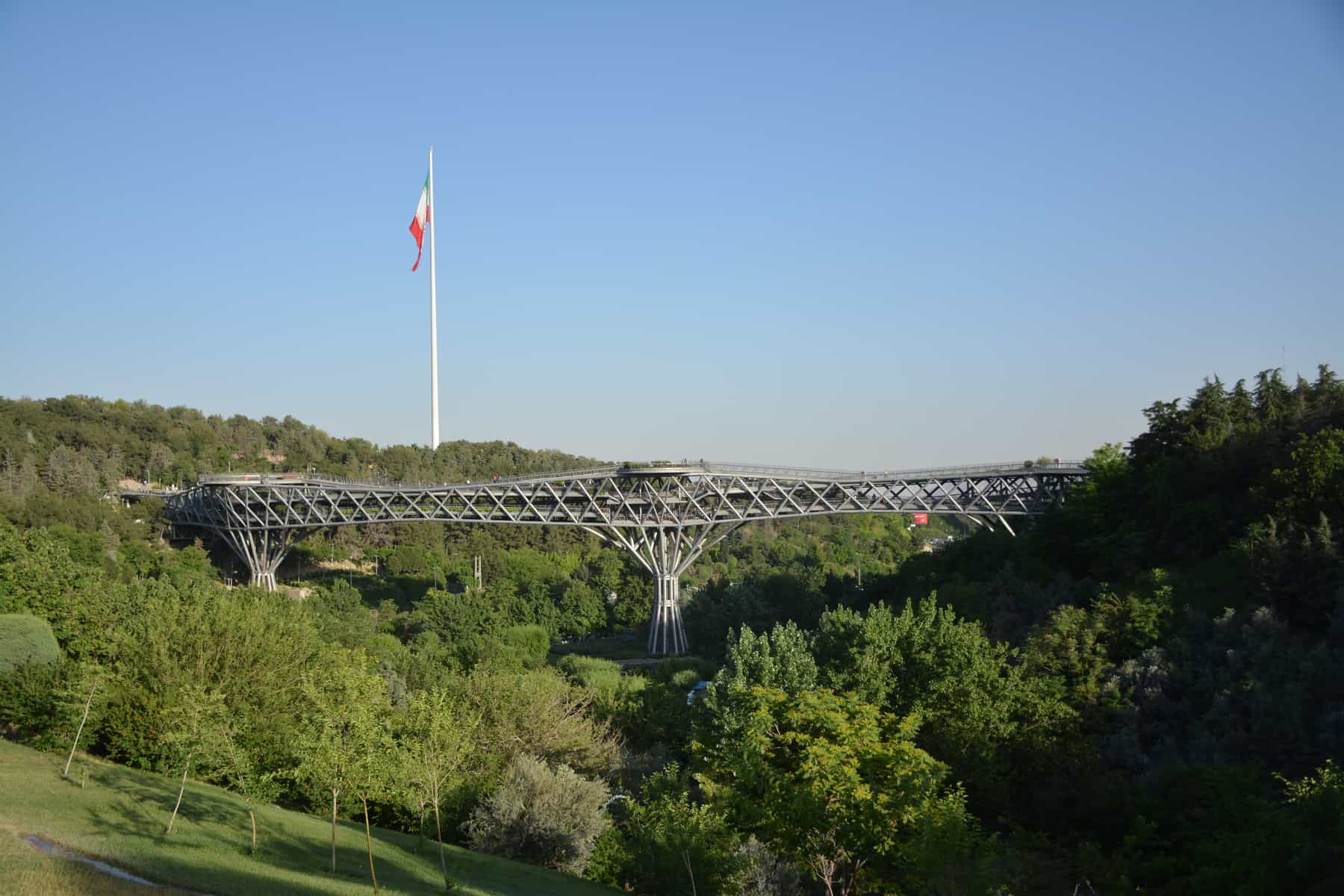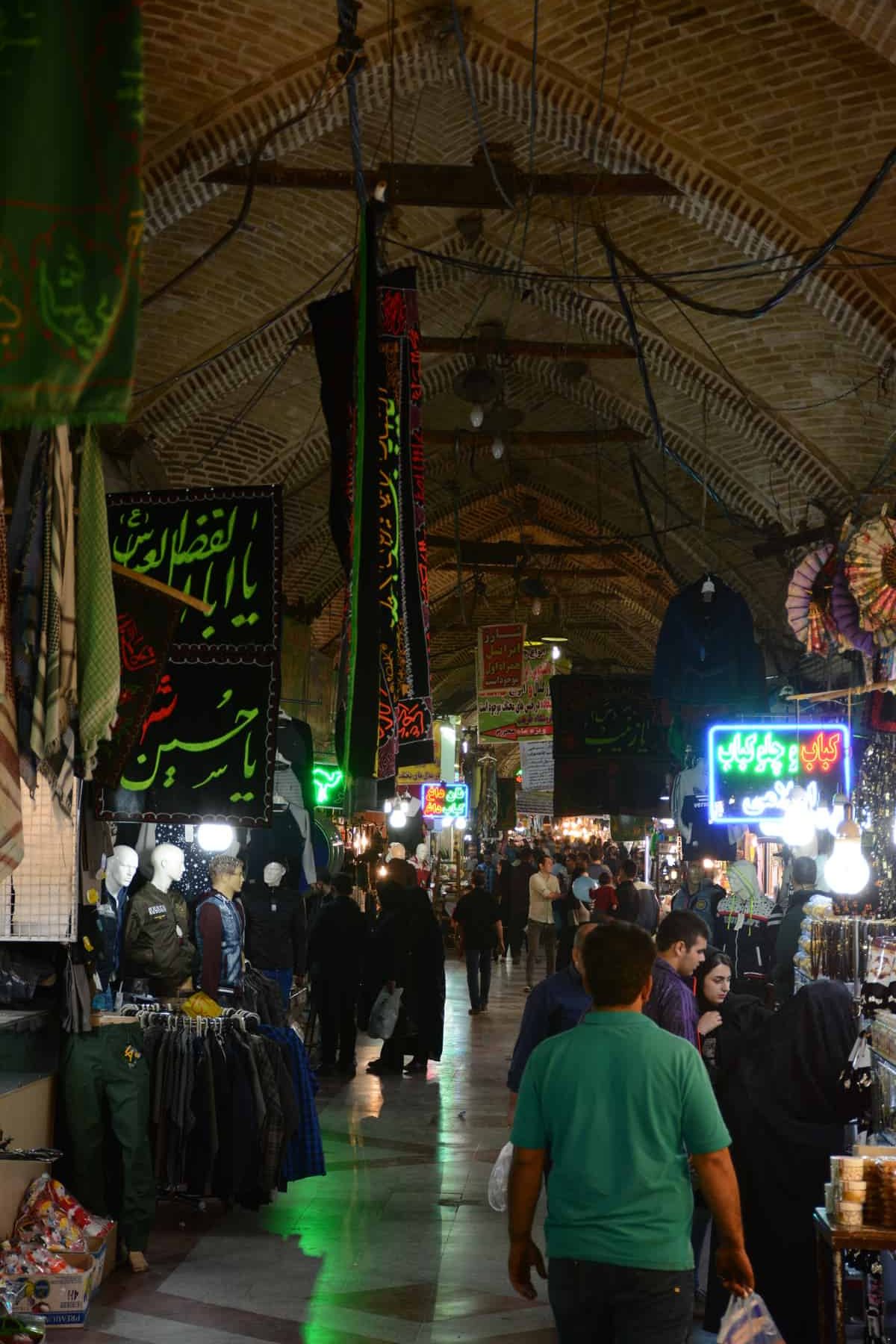Translated from Persian by Shohreh Laici and dedicated to Orhan Pamuk (photos courtesy Mohsen Listi).
When the young Iranian painter Manoucher Yektaei arrived in New York, he asked the painters he encountered what their artistic principles were. He was told that paintings with no subject were preferred. But as an Eastern dreamer, Yektaei could never escape his memories, and he didn’t try. Maybe that’s why Willem de Kooning—inspired by Yektaei’s work—began painting images based on real-life figures. In this way, Yektaei signed his name to the bottom of the New York School of Abstract Expressionism.
Something similar happened in Tehran when it entered the era of modernism. Both Yektaei and Tehran had memories but neither insisted on a precise form. Modernism happened very quickly in Tehran, in the second half of the twentieth century. In this, it competed with Seoul, and Vozara Street did its best to look like Broadway in New York City. The Tehran that Yektaei took as his subject was destroyed, replaced by absurd scenery. This is the Tehran of today—meaningless. It is like a Jackson Pollock: expensive and impressive, but absurd.
Tehran’s collection of varied collages, made of cinematic sceneries and overviews, leaves me feeling when I drive the highways like I’ve veered off into a scene from Jean Luc Godard’s Alphaville. When I go for a walk to the city’s northern heights, the milieu recalls Ridley Scott’s Blade Runner. This may sound exciting to potential tourists, but my life is not supposed to be like an apocalyptic science fiction movie. But it has been. The past, the present, and the future co-exist in Tehran. On a short walk in Northern Tehran, you will pass modest traditional houses, luxurious villas, ancient bazaars, traditional tea houses and restaurants, parks as thick as jungles, and gargantuan apartment towers in the style of Le Corbusier shooting up like poison mushrooms.
A combination of histories and cultures makes Tehran a truly cosmopolitan city, but a problem is the way academia defines urban design. Every day the privatization of public space increases and our city now suffers from a lack of places for free time and entertainment.

The impulse toward business and privatization imprisons the public places and cultural heritage of my Tehran. Few modern architects or academics understand space as a product of social life. As a result, the living spaces in apartment buildings are shrinking to the shape, and almost the size, of a Zippo lighter, while prices soar higher and higher but no one can promise that these apartment buildings will be safe and secure for people to live in.
For example, in the final days of Autumn 2017, when Iran was preparing to celebrate Yalda—the Persian observation, some believe, of the birth of Jesus Christ—a 5.2 magnitude earthquake struck Tehran. Overshadowed by larger and deadlier quakes which struck Iran a month earlier, no damage or casualties were reported, but many citizens spent that night in the streets, as they felt unsafe in buildings not constructed to withstand severe tremors. That night, Tehran was like a schizophrenic patient in the aftermath of the earthquake—gangs of teenagers rollerbladed in the streets, and dazed people wandered in empty malls and shopping centers.
Meaning has been lost in most of the city. One of the most absurd things about Tehran’s urban landscape is billboards advertising motivational career workshops, the notices growing like weeds all across the city and offering an accidental reminder of Tehran’s chronic employment.
Tehran’s modern architecture has become like a monster movie in which would-be capitalists star as a Godzilla that sucks up public spaces and breathes out a fire of malls, restaurants, and luxury hotels. The film would have a happy ending if residents could afford to shop or eat out, but they can’t, and modern Tehranians have taken to walking aimlessly among the chic shops, stumbling past food and clothes they cannot afford to buy.
Tehran’s architecture has forced the young generations of Iran to move their activities inside. They seek to establish heterotopia and to explore otherness in underground cafes; artists and authors prefer to meet in private apartments or galleries and studios that are both underground and illegal. Illicit music is more popular in Tehran than in other cities of Iran.
Construction rules across the city, but there are no professional architects, even as the need for housing escalates along with Tehran’s booming population. Authorities ignore meaning in Tehran’s architecture, yet Iranians have always drawn architectural inspiration from the literary imagination. We seek inspiration in history and books. We remain proud of the great Archaemenid empire. In the past, the history of Persia loomed over all, and no one had to worry about whether urban design would produce space that felt Iranian.

Iran’s social history—the mystic school and its philosophers, Avicenna, Al-Farabi, Mir Damad, Mulla Sadra—should still inspire meaning and space. Tehran’s bazaars acted as the skeleton of Iran’s economy and reminded us of the Golden Ages of architecture, such as that of Shaykh Bahaei. Later artists, Behzad and Kamalok Molk, resisted the dictatorship of their era. The geometric gardens constructed by Iranian master architects were inspired by the powerful poetic imagery of Hafez, Saadi, Rudaki, and Rumi.
The Tehran I knew as a child is very different from the Tehran I know today. Yektaei no longer paints, but the absurd scenery of Tehran, anticipated in the work of postmodern painters, has an ironic effect. Rather than acting as inspiration, the absurd architecture of modern Tehran walls off the minds and imaginations of a generation that is booming and hungry for social justice and equality.

Tehran is delaying, denying, and maybe dying. The city is terribly depressed, but who is to say something new won’t be born from this depression? Tehran is dying for change. Sometimes when I walk around the city, I feel that my Tehran will soon be reborn. I can smell a growing change under the skin of the city. The depression of Tehran’s architecture won’t last and the city will smile one day soon.

